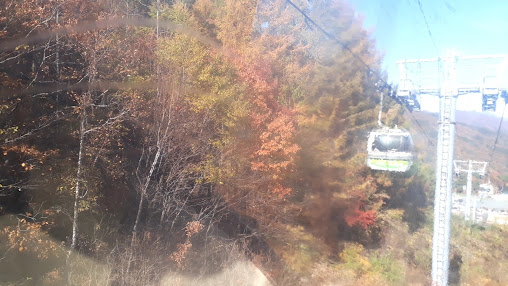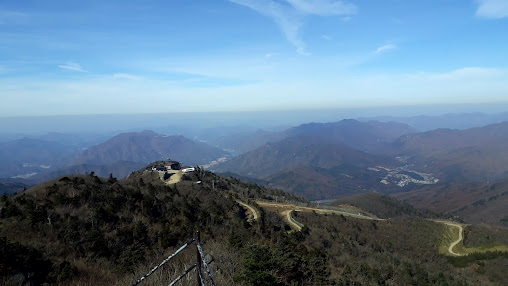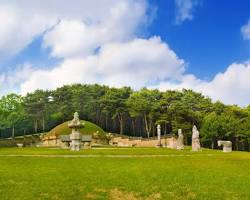If you're seeking a place of profound historical significance intertwined with serene natural beauty in the Gyeonggi-do province of South Korea, then Cheonjinam Holy Land (천진암 성지) should be high on your list. Located in Toechon-myeon, Gwangju City, this sacred site marks the very beginnings of the Catholic Church in Korea. Let's delve into the story and practicalities of visiting this remarkable destination.
1. Unveiling the History: The Birthplace of Korean Catholicism 🙏
Cheonjinam (天眞菴), meaning "Hermitage of Heavenly Truth," holds a unique and poignant chapter in Korean religious history. During the Joseon Dynasty, when Catholicism faced severe persecution, this secluded hermitage provided refuge for early Korean Catholics seeking to practice their faith in secret.
Interestingly, it was Buddhist monks residing in the original hermitage who offered shelter and protection to these early believers. This act of interfaith solidarity tragically led to the martyrdom of many monks who bravely stood by their Catholic neighbors. It is within this historical context of refuge, faith, and sacrifice that the seeds of the Korean Catholic Church were sown.
Today, while the original hermitage structures may no longer stand in their entirety (only the temple site remains as of 2007), the area is being developed as a significant Catholic sanctuary, including the construction of churches and other religious facilities. Notably, Cheonjinam is the final resting place of five pivotal figures who played instrumental roles in the founding of the Catholic Church in Korea. Visiting their tombs is a deeply moving experience for pilgrims and those interested in the early days of Catholicism on the peninsula.
2. Your Journey to the Sacred Site: How to Get to Cheonjinam 🚗🚌
Reaching Cheonjinam Holy Land is relatively straightforward, offering options for both public transport and private vehicles.
By Car:
The most convenient way to reach Cheonjinam, especially if you are traveling in a group or prefer flexibility, is by car. Navigate to the following address:
Korean Address: 경기도 광주시 퇴촌면 천진암로 1203 English Address: 1203 Cheonjinam-ro, Toechon-myeon, Gwangju-si, Gyeonggi-do
Parking is available near the holy site, though it can get busy on weekends and during religious holidays. The drive from Seoul takes approximately 1 to 1.5 hours depending on traffic conditions.
By Public Transportation:
While slightly more time-consuming, reaching Cheonjinam via public transport is certainly feasible and offers a glimpse into local life.
From Seoul (Gangbyeon Station, Subway Line 2): Take bus number 13-2 towards Toechon (퇴촌).
Get off at the "Toechon Terminal (퇴촌터미널)" bus stop.
At Toechon Terminal, transfer to bus number 38 or 38-2 heading towards Cheonjinam (천진암).
Get off at the "Cheonjinam Holy Land (천진암성지)" bus stop.
The entire journey by public transport from Seoul can take around 2 to 2.5 hours. Be sure to check the latest bus schedules as they may vary.
3. A Sanctuary of Scenery and Spirituality: Experiencing Cheonjinam 🏞️⛪
Upon arrival at Cheonjinam Holy Land, visitors are greeted by a landscape that fosters both contemplation and appreciation for nature. The area is nestled amidst rolling hills and lush greenery, creating a serene and peaceful atmosphere conducive to spiritual reflection.
As you explore the holy site, you will encounter various landmarks, including:
The Tombs of the Five Founders: These burial sites serve as a powerful reminder of the dedication and sacrifice of the early Korean Catholic pioneers.
Ongoing Development of Churches and Facilities: Witness the ongoing efforts to establish Cheonjinam as a prominent Catholic sanctuary in Korea.
Walking Trails: Take time to wander along the paths that wind through the natural surroundings, offering moments of solitude and connection with the peaceful environment.
The combination of historical significance and natural beauty makes Cheonjinam a unique destination. Whether you are a religious pilgrim, a history buff, or simply seeking a tranquil escape, the scenery and spiritual ambiance of Cheonjinam are sure to leave a lasting impression.
4. Navigating the Holy Land: Map 🗺️
While a detailed physical map is usually available on-site, you can also use online map services (such as KakaoMap or Naver Map, which are popular in South Korea) by searching for "천진암 성지" or the English address provided earlier to get an overview of the area and plan your exploration. These apps often provide real-time traffic information and public transport directions as well.
5. Exploring the Surroundings: What Else to See Near Cheonjinam 🏞️🌳🍽️
Located in the Toechon-myeon area of Gwangju, Cheonjinam is also conveniently close to other attractions that you might consider visiting to enrich your trip:
Gyeonggi Provincial Arboretum (경기도립물향기수목원): A beautiful botanical garden showcasing a diverse collection of flora, perfect for a relaxing stroll amidst nature.
Paldang Lake (팔당호): A large and scenic lake offering opportunities for waterside walks, cycling, and enjoying the surrounding landscape. Many restaurants with lake views can be found in the area.
Local Restaurants in Toechon-myeon: Indulge in delicious Korean cuisine at the various restaurants in the nearby town of Toechon. You can find everything from traditional Korean meals to local specialties.
Combining a visit to Cheonjinam Holy Land with exploration of the surrounding natural and cultural attractions can make for a truly memorable day trip or weekend getaway from Seoul.
We hope this guide has inspired you to visit Cheonjinam Holy Land and discover its profound history and serene beauty. Enjoy your journey to this significant birthplace of Korean Catholicism!


























.png)























